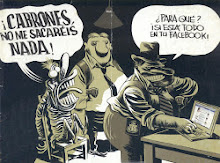Mark Anthony Neal
For an artist, who deftly redefined the contours of Soul music, Donny Hathaway’s most expansive use of his talents, might have been for the soundtrack of a long-forgotten Blaxploitation film, based on the writings of a not-nearly-remembered enough Black novelist.
Out-of-print for nearly three decades, the original motion picture soundtrack for Come Back Charleston Blue serves as a reminder of the era of Blaxpolitation—the moment in the late 1960s that marks the beginning of mainstream America’s fascination with under/other-worldly Blackness—but highlights the work of an often overlooked genius of black expressive culture, Chester Himes.
In his own right Chester Himes was one of the great literary figures of the 20th century. His first two novels, If He Hollers Let Him Go(1945) and Lonely Crusade (1947), though roundly dismissed at the time of their publication—Ebony Magazine called Himes a “psychopath” in a review of the latter—they have since become part of the canon of 20th century African-American literature, as is also the case with Himes’s two autobiographies The Quality of Hurt (1973) and My Life of Absurdity (1976).
Born in Jefferson City, Missouri in 1909, Himes began writing professionally, while he was in prison for armed burglary. Two short stories, “Crazy in the Stir” and “To What Red Hell” were published in 1934 by Esquire Magazine while Himes was a 25-year-old inmate. His experiences in prison, logically informed Himes’s decision to write as a social realist—capturing the less savory of aspects of Black American life, without a hint of irony or luster.
When Himes moved to Los Angeles in the early 1940s, hoping to find work as a Hollywood scribe, he turned to the shipyards of Los Angeles and what writer RJ Smith calls the “The Great Black Way” to find inspiration. “The Great Black Way” was Los Angeles’s “Central Avenue” which rivaled Harlem’s Lennox Avenue and Chicago’s “Stroll” in the mythology of mid-20th century urban Blackness. It was this world that Himes partly captured in his first novels and it would be this world that would fuel Himes imagination a decade later as he sat in exile in France.
After the commercial failure of his first two novels Himes headed abroad to France, mainly to salve his hurt feelings and depression. While in exile Himes turned to crime fiction and it was through his detective novels, set in the contemporary 1950s and 1960s, that Himes remained wedded to the intricacies of everyday Blackness.
Himes famously once described his main occupation as “the search for money,” as some have come to think of his crime novels an attempt to cash in quickly on his formidable writing skills—mid-20th century street-lit, if you will. The focal points of his nine crime-novels were a pair of “Harlem” detectives, Grave Digger Jones and Coffin Ed Johnson—characters who were based on two cops Himes had contact with on Central Avenue.
When Hollywood came calling for Himes—more than twenty years after Himes tried to sell scripts to Hollywood studios—it was those detective novels, in all their absurd glory, that became fodder in the Blaxploitation machine. The first of those novels depicted on screen was Cotton Comes to Harlem (1970), which was directed by Ossie Davis, and starred Redd Foxx and Calvin Lockhart. Grave Digger Jones and Coffin Ed Johnson were brought to life by Godfrey Cambridge (Watermelon Man) and Raymond St. Jacques. The duo reprised their roles when the Samuel Goldwyn company turned Himes’s “The Heat is On” into Come Back Charleston Blue (1972). Himes voiced little regret in having his work serving a machine that so many felt belittled African-American culture.
It was as a child, sitting in the theater with my parents, watching Cotton Come to Harlem and Come Back Charleston Blue that I was first introduced to Chester Himes (though the streets of Harlem were the real stars of those movies). It would be a decade later, as I college student, that I heard poet and Third World Press founder Haki Madhubuti reference the genius of Himes that occurred well before those movies were made. For all of the criticisms that could have been made about how exploitive the Blaxploitation film genre was, this was an instance, like Hathaway’s soundtrack, where it created a portal to something more compelling.
In his wonderful book The Great Black Way: L.A. in the 1940s and the Lost African American Renaissance (2006), RJ Smith writes of Himes, “the last thing he was interested in was being a role model, in ‘representing the race.’ That was the burden of those elegant Harlem Renaissance writers whose pictures [Himes] was turning to the wall.”
Chester Himes died in 1984.


































0 comentaris:
Publica un comentari a l'entrada